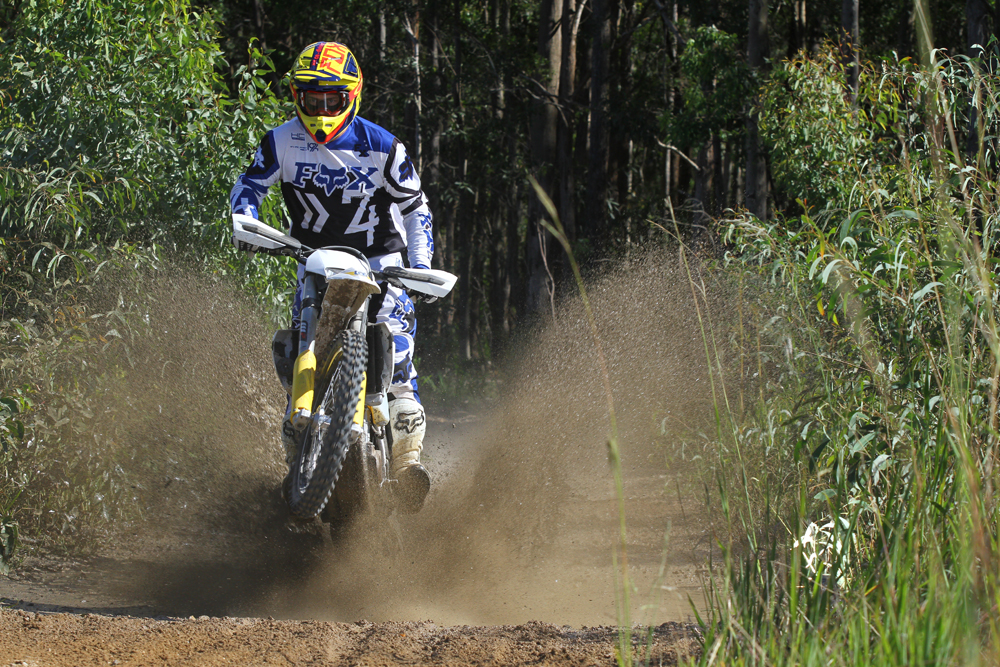
STANDING WATER
Lifting the front wheel across a small puddle can seem harmless and usually is, but when the puddles turn into small lakes beware of what lurks beneath.
STORY SHANE BOOTH | PHOTOGRAPHY DAMIEN ASHENHURST
WHAT COULD GO WRONG?
Ah — just about everything. When you’re cruising along a fire road at a decent speed and come across some standing water it’s so very tempting to just lift the front wheel and ride straight through it, at the same time hoping your mate hasn’t left enough room and you drench him in nasty trail water. Good in theory but the number of times I’ve seen this cause a premature end to a ride would make you think twice. So often those puddles have hidden surprises, usually in the form of 4WD ruts, but not always. Sometimes it may be just a big deep hole or it could have a very soft bottom that catches and drags your bike in. None of these is great to come across when you’re on the rear wheel at 60km/h with trees either side.
AVOID WHERE POSSIBLE
Yep, this will sound like the fun police, but if you’re planning on a good day’s riding don’t let a suspicious puddle end it. If you can ride around ít, that’s the smart option. Whenever you can remove unknowns from your riding it’s a good thing and this is a very easy way to do it. Not only do you remove the chance of a crash but slamming through puddles all day can force water into places on the bike that it shouldn’t be, even up into the carby via the breather hoses.
GET THE FRONT ACROSS IF YOU HAVE TO
In those situations where you have no choice or for those who are just going to take their chances, there’s one thing you need to make sure of. When you wheelie across a puddle, see to it — if nothing else — that the front wheel makes it across to dry land. That means choosing the correct gear selection to carry it across and also slowing slightly before the puddle so you can accelerate across it. That will help keep the front wheel in the air. You don’t want the front to slam back down the second the rear wheel hits the water; if this happens it’s likely to land in the water and can cause real problems, not the least of them getting covered from head to toe with lovely, stagnant H2O.
LOOK FOR SIGNS
Be smart and look for signs of trouble before entering the standing water. If obvious things stand out — like 4WD tracks leading into it — you probably want to avoid it. If it has steep edges, that may be a sign that it’s a deep hole and should be avoided if possible. Shorter bodies of water that are only a metre or two across are less risky than one that’s five or six metres, so factor that in, too. Above all, we want to have fun and be able to keep riding, so just don’t let a simple thing like a puddle with a hidden surprise end your day.




